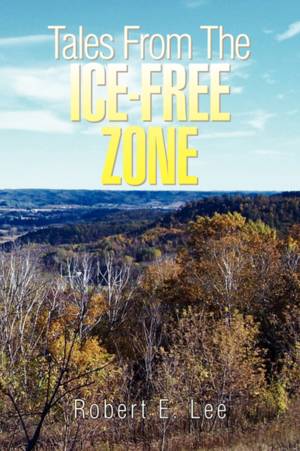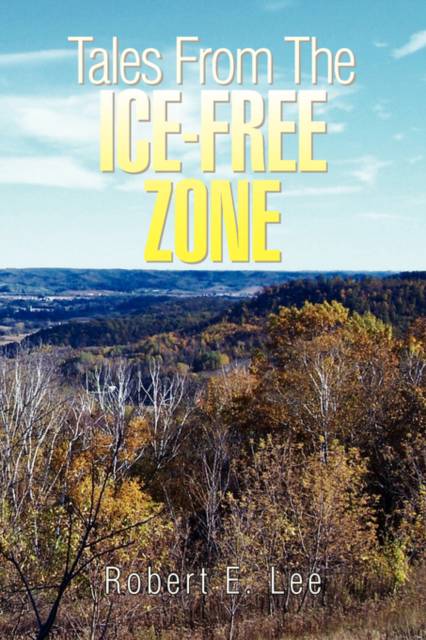
- Retrait gratuit dans votre magasin Club
- 7.000.000 titres dans notre catalogue
- Payer en toute sécurité
- Toujours un magasin près de chez vous
- Retrait gratuit dans votre magasin Club
- 7.000.0000 titres dans notre catalogue
- Payer en toute sécurité
- Toujours un magasin près de chez vous
Description
TALES FROM THE ICE-FREE ZONE, by Robert E. Lee, was seriously and soberly written to inform anyone who might pick up the book about life in the Driftless Area of America's Upper Midwest. Here lies the portion of our country that the great glaciers bypassed, though glacial activity completely surrounded it -- on one side at a time -- during at least four advances of the ice sheet. The bulk of this anomaly lies over the southwestern quarter (approximately) of the State of Wisconsin, though its edges slop across state lines into the adjacent corners of the neighboring Sister States of Minnesota, Iowa, and Illinois. Tracks of the great ice sheets can be seen all around the "Ice-free Zone" -- with plenty of glacial till of sand, gravel, and boulders in the landscape. The principal signs of glaciation within the Driftless Area lie in the bottoms and on the banks of rivers such as the Mississippi, Wisconsin, and Black Rivers that completely traversed the Ice-free Zone. The beds of such streams are filled with glacial till that was dropped as the melt-water flooding subsided. Such material is dug from gravel pits today and used as the aggregate in the mixing of concrete. On the other side of the glacial coin, it seems reasonable to suppose that much more of the pre-glacial topography adjacent to the Driftless Area must have looked much like the unglaciated terrain does now. Therefore, one might very well say that we have a living museum of ancient landforms right in front of us today. Only the life forms upon it have changed. These life forms are the principal subjects of this book. Here are the flora and fauna, depicted as the author has met them. He sees subjects of interest wherever he goes. Almost all of them are commonplace individuals of ordinary species, yet each one seems to tell a story by doing something that many folks miss. Every individual plant, mammal, bird, amphibian, or reptile has its own individuality and beauty, too. And the things that some of them do! Within these pages you will meet the Lone Ranger, The Sandbank Blues, and the Ugly All-American. You will be introduced to an "Odd Couple" that you have probably never dreamt of before. Their true story could probably be turned into a novel, especially in this era of cartoon style feature films of everything from bugs and chickens to superheros. Read further, and you will learn both when and why "Pink" is also "Violet". You will visit the perfumed ballerina fields of deep summer, and you could also see surprising summer snow. On a hot August afternoon, without a breath of air stirring, you might see a flowering plant doing a wildly gyrating dance -- and, later, find out why! That same evening, with luck, you could hear a loud and clattering "Midsummer Night's Chorus"-- of what? Again, the answer may surprise you. October nights in the Ice-free Zone may bring you the sound of the voice of the "Hob-goblin of Frosty Nights", a sound that might make your hackles rise. You will find out why this same month came to be called the "Crazy Moon" and who the "crazies" are. Get to know why November is likely to have a "Touch of Scarlet" at a season of the year when the rest of the world is a dull gray. Do you know why December sometimes brings us "Big Yellow Birds"? Or why January is an excellent time to track the Sub-arctic Snow Snake? Have you ever met the "Tiny Terror of the Tabletop"? One must really pay attention to see this fellow, but a visit with him is worth your time. Inside information on all of these subjects and many others will be revealed to you if you but open the covers of "Tales from the Ice-free Zone". The author is an old hand at spinning a yarn, and there are a lot of those yarns in this book. It should be mentioned that the great majority of the subjects of the stories in this volume are native to the great northeastern section of the United States from Virginia into Canada and west to the 100th Meri
Spécifications
Parties prenantes
- Auteur(s) :
- Editeur:
Contenu
- Nombre de pages :
- 204
- Langue:
- Anglais
Caractéristiques
- EAN:
- 9781425768690
- Date de parution :
- 11-07-07
- Format:
- Livre relié
- Format numérique:
- Genaaid
- Dimensions :
- 152 mm x 229 mm
- Poids :
- 458 g

Les avis
Nous publions uniquement les avis qui respectent les conditions requises. Consultez nos conditions pour les avis.






